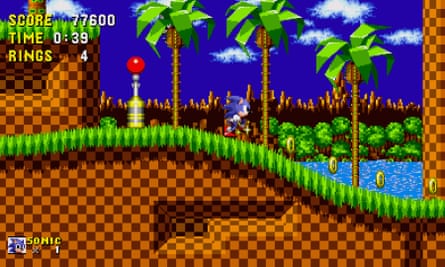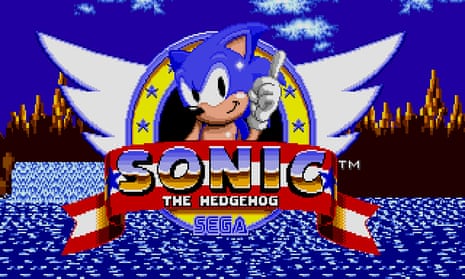In April, the pop musician Lorde gave an interview to the New York Times where she talked about a meeting with famed song writer Max Martin. The genius who helped create Katy Perry’s “I Kissed a Girl” and Taylor Swift’s “Blank Space”, referred to Lorde’s song Green Light as “incorrect songwriting”. He saw its early key change, weird melodics and the lack of drums until the chorus kicks in, as improper. “It wasn’t an insult, just a statement of fact,” said Lorde. “It’s a strange piece of music.”
Weirdly, as soon as I read the fascinating little snippet of song craft theory, I thought of Sonic the Hedgehog. The legendary platformer, in which a spiky creature sprints furiously through a series of multi-levelled environments is incorrect game design. It shouldn’t work. It’s wrong.
If you take a classic platform game design, such as Super Mario Bros – the player is always given the chance to read the level: to look ahead and assess every new piece of scenery or patrolling enemy. Then you get a series of neatly placed hazards that present discrete challenges.
In his excellent book on game design, A Theory of Fun, Raph Koster, says the essence of good game design is teaching – a well constructed level slowly introduces you to its themes, and shows you how to beat them. Learn, test, master.
Sonic doesn’t do this – all it establishes at the beginning is that speed is important. In a single playthrough, you only ever get a passing feel for the levels; you miss vast areas – all the rules are broken. As in Green Light, the melody and the maths are wrong; new players always find it hard to read the screen, because it’s not working like a good game.
To reach the more reward-intensive upper levels, you need to master the exact distances and timings between launch pads and obstacles, but it’s impossible to garner this information on a first run-through because the speed of the game – its main appeal – hides everything from you. In Sonic, you must learn through repetition rather than observation. This is confounding for a lot of people – just like the opening verse of Green Light, which holds the drums back for ages, and even then layers them deep beneath the piano.
Even the influences behind Sonic are incorrect. Designer Naoto Ohshima, who sketched all the zones out by hand, was influenced by pinball table design, filling each stage with flippers and bumpers to project Sonic in new directions like a ball-bearing. But pinball doesn’t work like video games.
In pinball you understand that you never really have full control over the protagonist (the ball), you are attempting to influence its speed and direction through secondary inputs, through deft touches. But video games are all about control. Players want to inhabit the avatar, ideally with a symbiotic relationship. Sonic even mocks this whole idea, by having the lead character tap his feet impatiently when the player dares to stop for a few seconds. Sonic tells you you are not really in control.

Lorde says about the making of her Melodrama album that she and her engineers laboured over every sound, every sample. It was a technical endeavour; they explored the negative space between notes, they manipulated song elements to discordant and disorientating effect. Sonic the Hedgehog is built around effects too; it is entirely inspired by programmer Yuji Naka’s revolutionary coding, which teased incredibly fast sprite manipulation out of the Mega Drive processor. Sonic is more about Naka’s ability than yours.
Sonic the Hedgehog punishes the player by manipulating their sense of momentum, by frustrating them into unexpected starts and stops. It is awful to be stuck at the base of a ramp in Sonic, unable to jump your way out, having to wait for the character to accelerate; trying to read the angles so that you spin out of a rut rather than straight back into it.You’re always fighting the system. The maths feels wrong, or at least it feels like the maths is against you.
Sonic is incorrect game design and yet, like Green Light, it’s a masterpiece. As Lorde sings, you want to just let go, but you can’t – you’re not really free. Yet sometimes in Sonic, when you get better, or through sheer luck, things take off, every jump is right, every loop-the-loop is perfect, and you’re in the flow, sailing above the game’s strange structure. Like the bridge in a brilliant pop song, it’s an exhilarating rush. It’s incorrect, but holy crap, when it works, it works.
Since the New York Times article, Lorde has suggested Max Martin’s comments were about her song Royals not Green Light, though interviewer Jonah Weiner is adamant they relate to the newer song. Sonic the Hedgehog remains a weird game.

